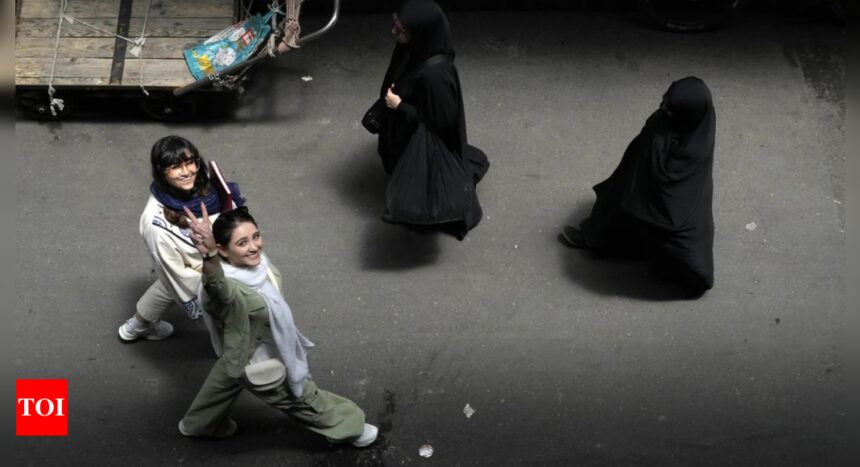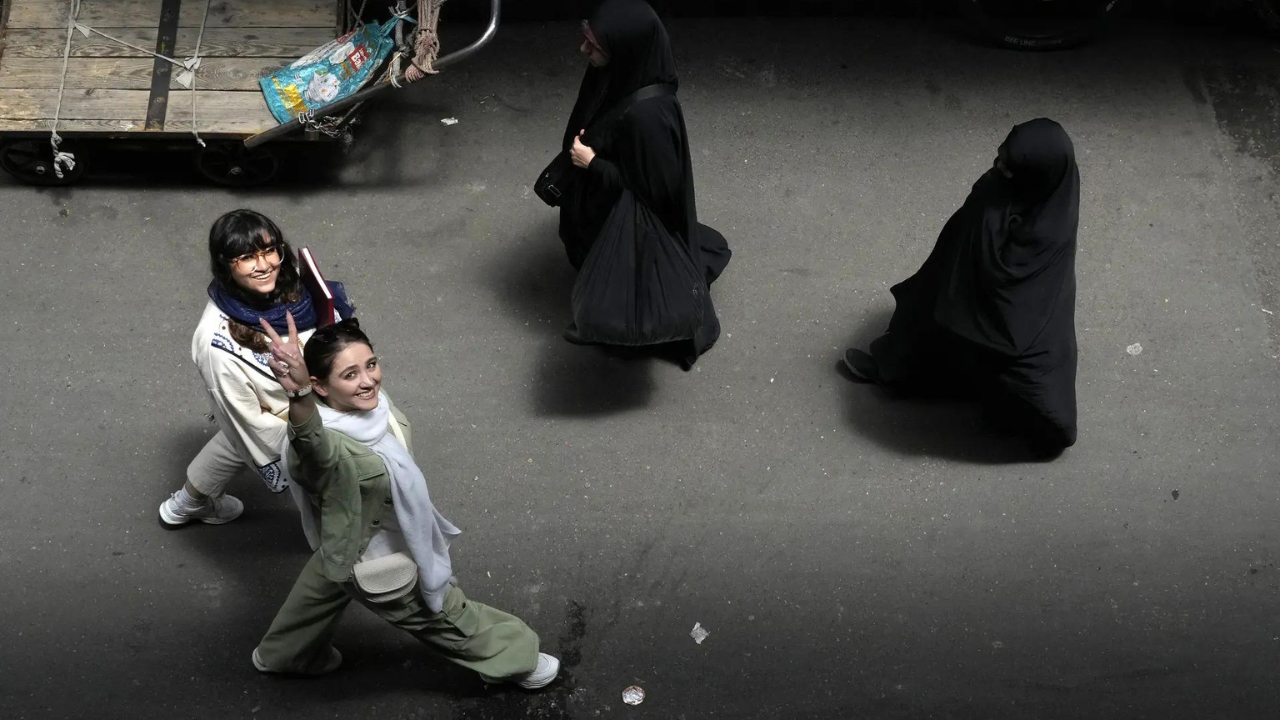Women from both affluent northern suburbs and working-class southern areas of Tehran were seen without hijabs in major parks during the day and after sunset.
Azadeh, a 25-year-old student at Tehran Sharif University, told AP, “My act of defiance in not wearing a scarf is a tribute to Mahsa Amini. We must protect this as an accomplishment.” She also reflected on Amini’s death, noting, “She could be my age now if she had not passed away.”
In several cities in western and northwestern Iran, including Sanandaj, Divandarreh, Mahabad, and Bukan, tradespeople and shopkeepers participated in the strike to mark the anniversary of Amini’s death.
Prisoners on hunger strike
Thirty-four female prisoners in Evin Prison, Tehran, went on a hunger strike to commemorate the Woman, Life, Freedom movement and the death of Mahsa Amini, according to an Instagram account linked to jailed Nobel peace laureate Narges Mohammadi. The account stated that the prisoners aimed to “join the protesting people of Iran against the government’s repressive policies.”
Prominent activists, including Narges Mohammadi, Verisheh Moradi, Mahbobeh Rezaei, and Parivash Muslimi, were among those participating in the strike.
Videos circulated on social media have also shown women being assaulted and mistreated for not wearing a headscarf.
Amini’s parents barred from visiting daughter’s grave
Iranian authorities have increased security around the home of Mahsa Amini’s parents in Saqqez, according to the Kurdistan Human Rights Network. Officials from the ministry of intelligence have reportedly surrounded the house, issuing threats and imposing a ban on the family from leaving or visiting Amini’s grave. The Aichi Cemetery, where Amini was buried, has also been blocked off.
On Instagram, Amini’s mother, Mozhgan Eftekhari, issued a statement to those she blames for her daughter’s death, saying, “They will be eternally disgraced in history.” Eftekhari added that Mahsa was taken by “those dark-hearted individuals who could not tolerate the beauty of their nation’s daughter” while on a trip to the capital.
Amini’s death background
Mahsa Amini died on September 16, 2022, after being detained by Iran’s morality police for allegedly breaching the country’s hijab law. Her death sparked widespread protests across Iran and broader demonstrations with demonstrations occurring in streets, universities, and schools for months against Supreme Leader Ayatollah Ali Khamenei. Hundreds of people lost their lives, and thousands more were injured or arrested during the protests.
Amini’s family claimed she was beaten in the police van after her arrest, but authorities denied this, stating that she died of a heart attack at the hospital.
The hijab has long been a symbol of both religion and politics in Iran. However, following the death of president Ebrahim Raisi, there has been a noticeable shift in the enforcement of strict hijab rules. The new president, Masoud Pezeshkian, has vowed to end the harassment of women by the morality police. Nonetheless, ultimate decision-making power remains with the 85-year-old Supreme Leader Ayatollah Ali Khamenei, who has declared that unveiling is both religiously and politically forbidden.
Despite some easing of restrictions, the Iranian government continues to target businesses where women are not wearing hijabs. Surveillance cameras and aerial drones are used to identify and penalize uncovered women, particularly at events such as the 2024 Tehran International Book Fair and locations like Kish Island, according to the UN.
Source : Times of India









